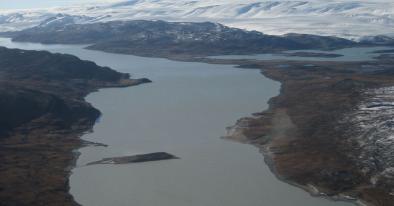Science Source
Algae drive enhanced darkening of bare ice on the Greenland ice sheet
- States that surface ablation of the Greenland ice sheet is amplified by surface darkening caused by light-absorbing impurities such as mineral dust, black carbon, and pigmented microbial cells
- Presents the first quantitative assessment of the microbial contribution to the ice sheet surface darkening, based on field measurements of surface reflectance and concentrations of light-absorbing impurities, including pigmented algae, during the 2014 melt season in the southwestern part of the ice sheet
- Finds that the impact of algae on bare ice darkening in the study area was greater than that of non-algal impurities and yielded a net albedo reduction of 0.038 ± 0.0035 for each algal population doubling
- Argues that algal growth is a crucial control of bare ice darkening, and incorporating the algal darkening effect will improve mass balance and sea level projections of the Greenland ice sheet and ice masses elsewhere
Related Content
Science Source
| Geophysical Research Letters
Melting glaciers stimulate large summer phytoplankton blooms in southwest Greenland waters
Kevin R. Arrigo, Gert L. van Dijken, Renato M. Castelao et al
Science Source
| Geophysical Research Letters
Ice Core Records of West Greenland Melt and Climate Forcing
K. A. Graeter, E. C. Osterberg, D. G. Ferris et al
Science Source
| Science Advances
Abrupt shift in the observed runoff from the southwestern Greenland ice sheet
Andreas P. Ahlstrøm, Dorthe Petersen, Peter L. Langen et al
Headline

Dec 15, 2017 | Vox
Greenland's ice sheet is driving global sea level rise. One section is melting 80% faster.


